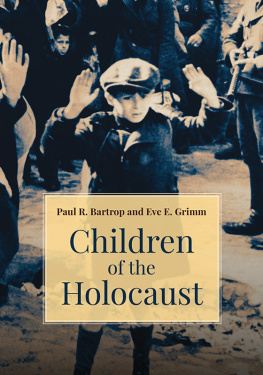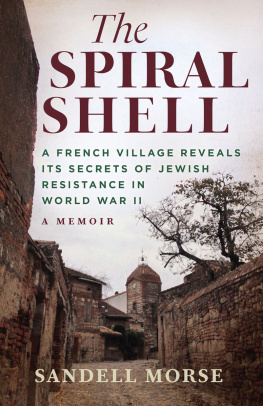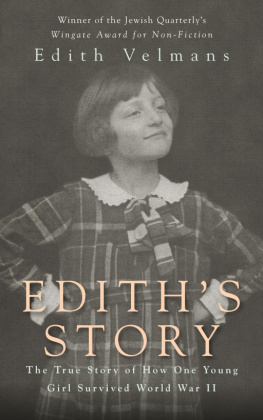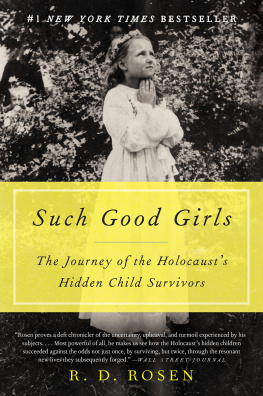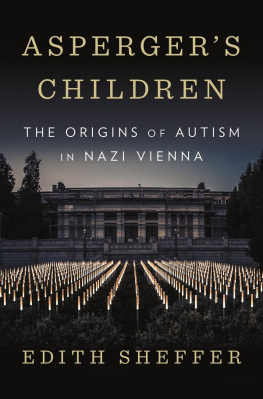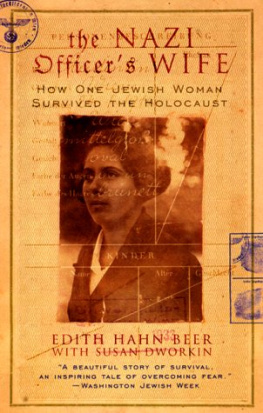| Hiding Edith |
| Kathy Kacer |
| Allen Unwin (2011) |
|
| Tags: | JNF025090, JNF025000, JNF025070 |
In 1938, Edith and her family joined the many Jewish people forced to leave their homes to escape the Nazis. In a desperate bid for survival, Edith was entrusted to the care of a children's home in Moissac, France, where other Jewish children were hiding. All the people of the town promised to keep the children's identity a secret. Could they possibly succeed? Would Edith ever see her family again? A dramatic and moving account of one girl's experience during World War II. This is the true story of Edith Schwalb.
ACKNOWLEDGEMENTS
First and foremost, my thanks and gratitude to Edith Gelbard for sharing her story with me. The first time I heard Edith talk about her experiences in Moissac, she was speaking to a group of students. She summarized her story in about five minutes. And in that short time, I heard something remarkable, and knew I wanted to hear more. Edith has patiently endured my thousands of questions with grace and humility, and has always maintained her endearing smile and warm hospitality.
Through Edith, I was introduced to Eric Goldfarb and had the pleasure of interviewing him to fill in some of the missing pieces of this story. Sadly, Eric passed away only a few weeks after our meeting. He was a charming, warm, and witty man and I am grateful we had the opportunity to talk. I am also indebted to his wife, Fee, for generously sharing Erics photographs and stories.
My thanks, as always, to Margie Wolfe of Second Story Press, for continuing to encourage and embrace my writing. The Holocaust Remembrance Series, of which this book is a part, is Margies creation. She is a tireless advocate of Holocaust literature for young readers, and I admire and respect her greatly.
Thanks as well to Charis Wahl for her patience and diligence in the editing process. Thanks to Carolyn Wood, Melissa Kaita, Phuong Truong, and Leah Sandals, the women of Second Story. They are a dedicated and talented group and it is a pleasure to work with all of them. I am grateful to the Ontario Arts Council for its support.
I have a fabulous circle of friends and family. To those I see, speak to, or email on a regular basis, to those whom I have come to know within the writing community, and to those who feed me on Friday nights, I love and thank you all.
Every day in my life I have my husband, Ian Epstein, and my children, Gabi and Jake. They nurture my soul, and give me balance, perspective, humor, and love.
AUTHORS NOTE
Hiding Edith is a true story. Edith Schwalb was born in Vienna, Austria, in 1932. She and her family left Austria as World War II approached and eventually made their way to southern France. After her father was arrested by the Nazis, her mother and sister went into hiding in the countryside; Edith and her brother, Gaston, were sent to the house in Moissac.
The house was funded by the Jewish Scouts of France (Eclaireurs Israelites de France) and run by a young couple, Shatta and Bouli Simon. Henri Milstein was the choir director, Germaine Goldflus one of the counselors. Sarah Kupfer became Ediths close friend. For four years, Shatta and Bouli harbored Jewish children whose parents had gone into hiding or had been arrested by the Nazis. Of the more than five hundred Jewish children who lived in the house during the war, only one did not survive: her parents took her away, against the advice of Shatta and Bouli. The family was caught and deported to a concentration camp.
The entire town of Moissac knew about the house and its purpose, and the children were welcome in the local school. The townspeople never betrayed the Jews living among them. If there were the threat of a Nazi raid, the mayor would send word to Shatta and Bouli. The children would go camping in the hills around Moissac and return when the danger had passed.
In writing Hiding Edith, I have tried to stay true to Ediths life as a hidden child. In some cases, she was not able to recall the names of people she had encountered during the war, so I invented names for several people. As well, Eric Goldfarb and Edith never met in Moissac, though they were there at the same time. Eric was sixteen years old and stayed for six months before joining the Resistance. Eric and Edith did meet, in Toronto, many years after the war.
In May 2004, many of the children of Moissac, including Edith, together with the children and grandchildren of Shatta and Bouli returned to the house for a ceremony of remembrance. Two plaques were unveiled: one honored Shatta and Bouli Simon; the other honored the former mayor and the citizens of Moissac who, at the risk of their lives, collectively saved the lives of hundreds of Jewish children.
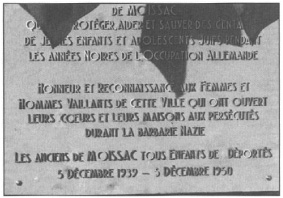
A plaque placed in Moissac in 1950 by the child survivors of the house. It says in part, To the citizens of Moissac who protected, helped, and saved hundreds of young Jewish children during the dark years of the German occupation.
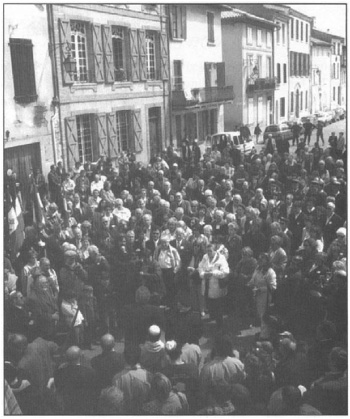
May 2004 A gathering of child survivors and citizens of Moissac in front of the house. Edith is standing close to the center in a white jacket. There are also young scouts from the community standing in the foreground.
CHAPTER 1
May 1938 Vienna, Austria
Walk quickly, Edith, Papa urged. Your mother will be waiting for us with a hot lunch. We dont want to be late, do we?
Edith clutched her fathers hand tightly. But Papa had such long steps that she almost had to run to keep up. She shifted her school bag and focused on avoiding the crowds of people surging around her. Men and women rushed in all directions, buzzing like giant bees. Cars honked their horns impatiently as pedestrians darted out into traffic. The sun beat down on Ediths head, and for a moment she longed to stop and savor its warm rays on her small face.
Vienna in May was alive with flowers and birds, smells and sounds. Cafs had opened their doors, inviting customers to come in and sit down. Street vendors paraded their wares: sweet ice cream and mouth-watering chocolate; other merchants displayed newspapers and magazines. Store windows were filled with colorful summer fashions. The city had woken up like a bear after its hibernation. And Edith wanted to take it all in. But she had to keep up with Papa, and that meant she couldnt stop.
The day was so beautiful and the city so energetic that Edith hardly even thought about how scary life was becoming. No matter how young you were, you couldnt live in Vienna in 1938 and not know that Austria was becoming dangerous. Two months earlier, Germany had invaded, and Nazi soldiers had marched right through the streets of Vienna. Austrian citizens came out to cheer, waving flags with the swastika, the emblem of the Nazi army, emblazoned on them. But Jewish families like Ediths did not cheer. They whispered the name of Adolf Hitler in fear. Hitler was the leader of Nazi Germany, and he hated Jewish people. He said that they were filthy, greedy, and dangerous. He said that Jews were the enemy of Germany and had to be stopped. He had promised that Austrian people would have a better life once they got rid of all the Jews. And now his supporters were in power in Austria, and wanted to punish anyone who was Jewish. They were stopping Jewish people from doing the things they normally did, like going to parks and playgrounds, and even to some stores. Jewish businesses were forced to close or were being taken over by Nazi supporters.



